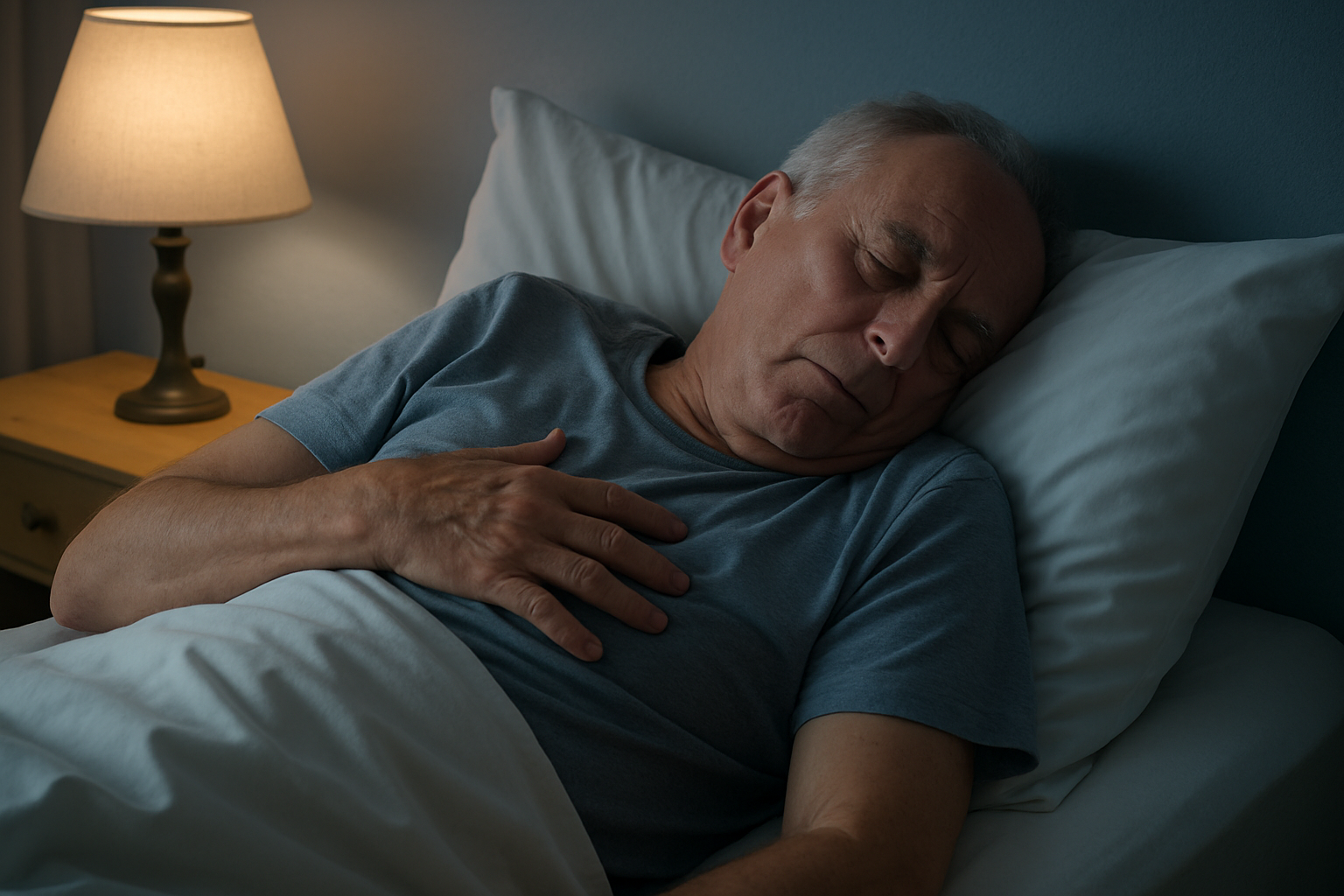As we age, how we sleep becomes more important than ever—especially when it comes to heart health. Quality sleep doesn’t just improve mood and energy levels; it has a direct impact on cardiovascular function.
However, many older adults don’t realize that certain sleep positions can actually put unwanted strain on the heart, potentially worsening conditions like high blood pressure, heart failure, or sleep apnea.
In this article, we’ll highlight which sleep position could be doing more harm than good—and share practical tips to help you sleep better and protect your heart.

The One Sleep Position Older Adults Should Avoid
Left-side sleeping: A subtle but significant strain on the heart
While left-side sleeping is often considered harmless, it can pose problems for individuals with existing heart conditions.
Why? Because lying on your left side shifts more of the body’s weight onto the heart, slightly compressing the chest and potentially impairing its function. For seniors with heart failure or breathing difficulties, this added pressure can lead to:
-
Heart palpitations
-
Shortness of breath
-
Feeling unusually tired after waking up
Left-side sleeping may also raise intrathoracic pressure, which can interfere with blood returning to the heart, further straining the cardiovascular system.
Though this position isn’t harmful for everyone, older adults with heart issues may find their symptoms worsen when sleeping this way.

The Best Sleep Position for Heart Health
Right-side sleeping: A safer and more supportive choice
For individuals with heart conditions, sleeping on the right side is often the most heart-friendly option.
This position helps:
-
Reduce pressure on the heart
-
Improve blood circulation
-
Decrease sleep apnea episodes
-
Support deeper, more restful sleep
Right-side sleeping gives the heart more room to function properly and is generally considered the safest sleep position for those with cardiovascular concerns.
Positions to Avoid or Use With Caution
Stomach sleeping:
This position compresses the lungs and internal organs, and can strain the neck and spine. It’s not recommended at any age—especially for older adults with respiratory or musculoskeletal issues.
Back sleeping:
While lying on your back can keep your spine aligned, it may worsen acid reflux, snoring, or sleep apnea, particularly in those already prone to these issues. If you sleep on your back, consider using an adjustable pillow or mattress to elevate your head slightly.

Heart-Healthy Sleep Tips for Older Adults
Choose the right pillow
Your pillow should keep your head and neck in line with your spine. Too flat or too high, and you risk airway restriction and poor sleep quality.
Stick to a regular sleep schedule
Going to bed and waking up at the same time each day helps your internal clock stay in sync, making it easier to fall asleep and wake up naturally.
Avoid caffeine and heavy meals at night
Large dinners or late-night caffeine can keep your heart racing and make it harder to fall asleep. Instead, opt for a light, calming meal a few hours before bedtime.
Ensure good airflow in your bedroom
A cool, well-ventilated sleeping space promotes easier breathing and reduces stress on the heart and lungs. Consider using a fan or opening a window for fresh air.
Consult your doctor if sleep issues persist
If you frequently wake up feeling exhausted, notice heart palpitations, or struggle to breathe at night, talk to your healthcare provider. These could be signs that your sleeping position or environment is affecting your heart health.
Final Thoughts
Getting good sleep isn’t just about feeling rested—it’s essential for your heart. By making simple adjustments to your sleep posture and routine, you can improve your breathing, reduce cardiac stress, and wake up feeling more energized.
For older adults, these small changes can have a big impact on daily well-being. Protect your heart—start by sleeping smart.
